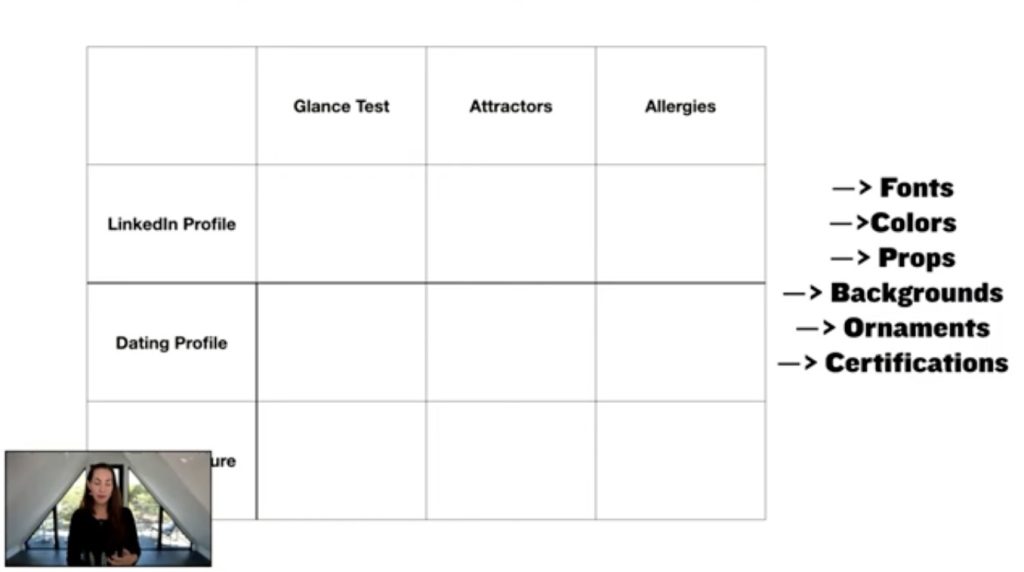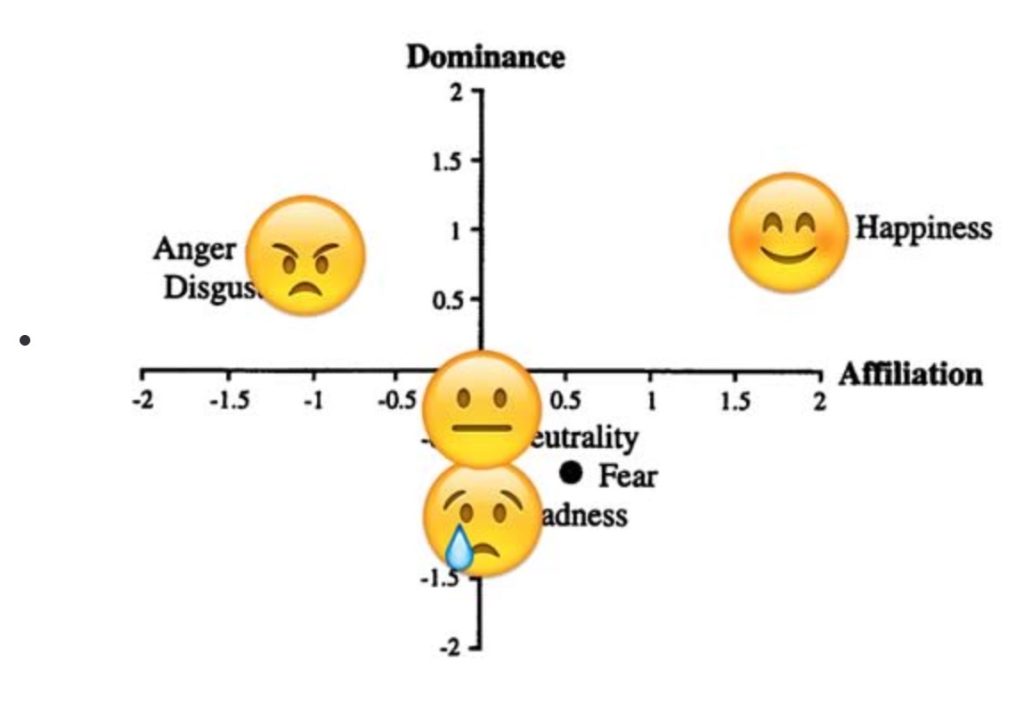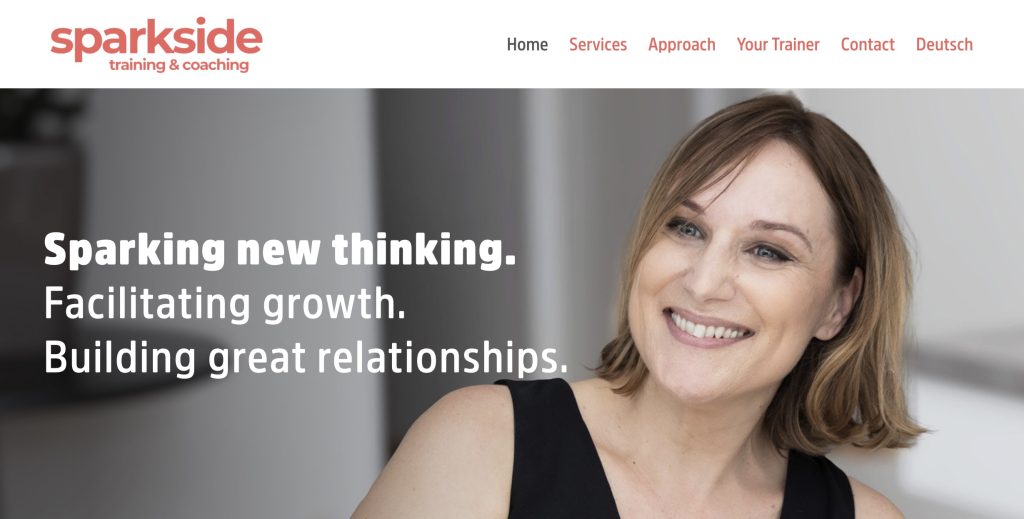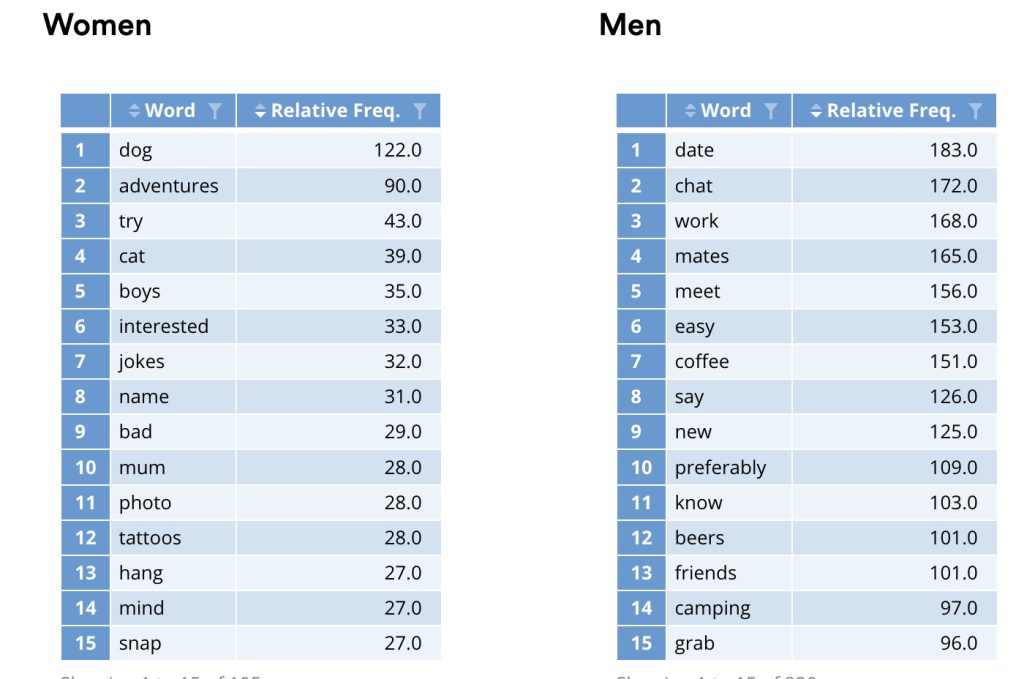What is Digital Body Language?
Digital body language refers to the cues, signals and nonverbal behavior that individuals display in online profiles, emails, chats or other virtual interactions. These cues can manifest in various forms, including in LinkedIn photos, online word choice, and even behaviors during video calls such as camera usage and attentiveness.
Watch our full digital body language training here!
How to Improve Your Digital Body Language
Here are some easy ways for you to do a digital body language makeover.
Profile Tips
According to a survey1https://passport-photo.online/blog/linkedin-picture-hireability/ of over 200 human resource professionals, business owners, and managers, a candidate’s LinkedIn profile picture is a critical factor in the hiring process. In fact, 71% confessed to rejecting a candidate based solely on a poor LinkedIn profile picture.
So whether you’re sprucing up your LinkedIn profile or want to create that killer bio, here are the science-backed tips for you.
Boost competence, likability, and influence
PhotoFeeler, a unique platform, offers a window into the minds of over 60,000 individuals who’ve cast their votes on profile pictures, revealing insights on competence, likability, and influence.

Here’s what they found:
- Eyes Wide Open: Sunglasses may shield your eyes from the sun, but they can dim your likability. PhotoFeeler’s data shows that eye blockage, even from stylish shades, drops the Likable score by an average of -0.36. Squinching, slightly squinting your eyes, garners you an average gain of +0.33 for Competence, +0.22 for Likability, and +0.37 for Influence. It exudes comfort and confidence.
- Jawline Magic: A shadow line outlining your jaw? That’s a +0.24 bump for Competence, +0.18 for Likability, and +0.18 for Influence. It’s all about those crisp contours.
- The Power of a Smile: Flash those pearly whites, and you’ll gain an average of +0.33 for Competence, a whopping +1.35 for Likability, and +0.22 for Influence. An open-mouth smile takes it further, with a Likability boost of +1.49. But remember, moderation is key; too much laughter might cost you Competence and Influence points.
- Dress for Success: The attire you choose matters. Formal dress scores an average increase of +0.94 for Competence and +1.29 for Influence. Think dark-colored suits and button-downs with ties (for men) for the ultimate formal impact.
- The Perfect Frame: Your photo’s composition is crucial. A head and shoulders or head-to-waist shot is ideal. Face-only close-ups pull Likability scores down by an average of -0.21, while full body photos negatively affect both Competence and Influence by -0.29.
- Setting the Scene: Your environment makes an impact. Dark, nighttime-like photos can drop your Likable score by an average of -0.38. On the flip side, over-saturation doesn’t help either. Very high color saturation can decrease perceived Competence by -0.31, Likability by -0.07, and Influence by -0.35. Black and white photos, though, maintain a neutral stance.
You can upload your photo and have others rate you for feedback!
Choose a Warm Background Color
Moz, an SEO company, conducted a fascinating experiment2https://moz.com/blog/google-author-photos to shed light on the influence of background color on click-through rates.

The Verdict: Warm-colored backgrounds gave the best results. Think inviting shades like reds, oranges, and yellows. These colors can evoke emotions ranging from excitement to warmth and even more.
Want to learn more of the effects of color on psychology? Check out: Color Psychology: How Color Affects Your Emotions And Why
Let Others Choose Your Profile Picture
When it comes to choosing the perfect profile picture, we often trust our own judgment. But the pictures others choose for us can make a better first impression.
Two extensive online studies3https://cognitiveresearchjournal.springeropen.com/articles/10.1186/s41235-017-0058-3 with 610 participants revealed this fact—Profile pictures selected by others tend to create more favorable initial impressions than the ones we pick ourselves.
Here’s a simple strategy: Grab a few photos you think are profile-worthy and ask 2-3 friends or trusted acquaintances what they think is best. More likely than not, the winning photo of the bunch might make a better choice than what you’d pick!
Action Step: You can also use a free tool like PhotoFeeler which will allow other users to vote on your picture.
Think Carefully About Color
When it comes to creating a standout profile, what colors should you pick? A study4https://uxdesign.cc/how-to-stand-out-on-twitter-using-color-theory-7e786c0e00a7 analyzing over 200 Twitter profiles discovered that the color yellow is a popular choice among users.
Yellow, with its cheerful and eye-catching nature, stood out as the primary color for 25.92% of the profiles examined. Here are the results:
- Yellow: 25.92%
- Black: 22.22%
- Blue: 14.81%
- White: 11.11%
- Green: 9.25%
- Purple: 7.40%
- Orange: 5.55%
- Red: 3.74%
Try incorporating some yellow—especially as a profile picture background or in the banner image. We at Science of People use yellow as one of our brand colors for a good reason!
If yellow is not your color, simply be purposeful with which color you choose. They tend to signify and create different impressions. Here is our color psychology overview and video.
Color Psychology: How Color Affects Your Emotions And Why
Use The Rule of Thirds
Renowned author and speaker Guy Kawasaki5https://socialnomics.net/2014/12/08/the-science-to-having-an-attractive-profile-photo-on-linkedin/?ref=buffer.com offers valuable insight into profile photo composition: embrace asymmetry. When it comes to profile pictures, symmetry can sometimes make them appear less captivating.
Instead of centering your face, consider using hypothetical vertical lines to divide your photo into thirds.

Aim to position your eyes along one of these lines.
This technique adds a touch of intrigue to your photo and can make it more visually appealing rather than a front-on headshot.
Personality Traits and Your Profile
How well do you know your personality? Exciting research6https://sites.sas.upenn.edu/sites/default/files/danielpr/files/persimages16icwsm.pdf from the University of Pennsylvania shows a connection between personality traits and the images we choose for our online profiles.
As a quick reminder, here are the Big 5 traits:
- Extroverts are outgoing and sociable, enjoying social interactions and often seeking the company of others.
- Neurotic individuals tend to be more emotionally sensitive, experiencing higher levels of anxiety, mood swings, and distress.
- Conscientious people are organized, dependable, and often follow rules and schedules meticulously.
- Agreeable individuals are friendly, empathetic, and cooperative, making them pleasant to be around.
- Openness to experience reflects a willingness to embrace new ideas, creativity, and a diverse range of experiences, often associated with curiosity and exploration.
Use this info to not only tailor your profile, but read others as well.
Here’s How Personality Traits Influence Profile Photos:
- Extroverts: Extroverts tend to post vibrant photos filled with positive emotions, such as group photos with multiple faces. This reflects their love for social interactions. If you’re an extrovert, emphasize your outgoing nature by sharing colorful, cheerful photos featuring friends.
- Neurotic Individuals: People with neurotic tendencies often shy away from displaying faces in their photos. When they do include faces, they’re either significantly larger than normal or partially obscured with glasses. Expect less positive facial expressions in their pictures. If you lean toward neuroticism, focus on overcoming photo-related fears and consider showcasing your genuine emotions.
- Conscientious People: Conscientious individuals tend to adhere to social norms in their profile pictures. Smiles are common, as they follow the expectation of appearing happy. Their photos are typically well-proportioned and high in quality. If conscientiousness is your forte, use this trait to convey reliability and approachability.
- Agreeable Individuals: Agreeable people frequently display positive emotions in their photos. Although their pictures may be slightly blurry, they compensate with vibrant colors. Embrace your agreeable nature by emphasizing the warmth and friendliness that shine through your photos.
- Openness to Experience: Individuals high in openness tend to avoid showing faces even more than neurotic counterparts. Their photos often feature negative or neutral emotions. These images are also characterized by enhanced contrast and sharpness, with less blurriness. If openness defines you, use your profile to showcase your unique creativity and distinctive aesthetic.
Use The Glance Test
The glance test is a quick way to evaluate how your personal brand is perceived by others. It involves taking a quick glance at your personal brand, such as your LinkedIn profile, dating profile, or email signature, and evaluating it based on three words that come to mind. These words should be positive and reflect your desired personal brand. If the words that come to mind are negative or don’t align with your personal brand, it may be time to make some improvements.
Trigger and create allergies and attractors. In other words, think of what are the positive neural maps you want to trigger for your people. Also, how could you create allergies? Allergies are cues that someone’s going to see that let them know they’re not your audience—saving both of your time.

Here are some tips for using the glance test to evaluate your personal brand:
- Choose three words that reflect your desired personal brand: These words should be positive and reflect the image you want to project to others. For example, if you want to be seen as professional and knowledgeable, your words might be “expert,” “experienced,” and “reliable.”
- Evaluate your personal brand based on these words: Take a quick glance at your personal brand, such as your LinkedIn profile, dating profile, or email signature, and evaluate it based on the three words you’ve chosen. Does it align with your desired personal brand? If not, it may be time to make some improvements.
- Use color coding to identify areas for improvement: If you want to get fancy with the glance test, you can use color coding to identify areas for improvement. Use red for negative words and black or blue for positive words. This can help you identify areas where you need to make improvements.
- Make improvements where necessary: If your personal brand doesn’t align with your desired personal brand, it’s time to make some improvements. This might involve updating your LinkedIn profile, adding more cues to your dating profile, or revising your email signature.
Approach, Allure, Dominate
Researchers7https://www.pnas.org/doi/pdf/10.1073/pnas.1409860111 analyzed 1,000 images of faces and found certain cues to make you much more charismatic digitally. Here’s what they found:

- Ignite Approachability: Images with a bigger smile were rated as more approachable. Just like in real life, a welcoming smile works wonders. Online, this means opting for cheerful emojis and warm language in your texts and comments. Your virtual grin will invite others to engage with you, setting the stage for meaningful connections.
- Evoke Allure: The study revealed that larger eyes exude youthful charm. In the digital sphere, it’s all about your profile picture. Choose well-lit, flattering photos that accentuate your eyes. This subtle shift can make your digital presence magnetic and unforgettable.
- Digital Presence: While you can’t alter your facial structure online, you can fine-tune your virtual body language. The study suggested that a more stereotypically masculine face relates to increased online dominance. Here’s your cue: be assertive, but also be a keen listener during digital exchanges. This balance lets you convey authority without overwhelming your online interactions.
Look Left
Sure, you can look front-on. But if you do decide to turn your head, research8https://www.doctorabel.us/side-bias/asymmetries-in-portraits-insight-from-neuropsychology.htmlhttps://www.doctorabel.us/side-bias/asymmetries-in-portraits-insight-from-neuropsychology.html shows that when the left side (your right when viewing the picture) is featured, it often conveys more emotion, while the right side suggests higher dominance and self-control.

Show Your Environment
If you want to come across as warmer and more trustworthy to your colleagues, don’t be shy about sharing the occasional selfie with your work environment in it.
A study9https://journals.plos.org/plosone/article?id=10.1371/journal.pone.0216625 found that scientists who posted selfies from their labs or fieldwork were perceived as significantly warmer and more trustworthy—without compromising their perceived competence!
Want a deeper dive into warmth and confidence? Check out:

Succeed with People
Master the laws of human behavior and get along with anyone. Increase your influence, impact, and success.
Register below to get your FREE chapter of Captivate.
Have a Powerful Smile
A Stanford study10http://web.stanford.edu/group/spanlab/Publications/bk96jnb.pdf reveals that profile photos with smiles showed both more dominance and affiliation than photos without smiling.
Dominance implies confidence and authority, while affiliation suggests warmth and openness. Blend these elements in your smile, and you’ll create a powerful impression that sticks. Whether you’re meeting potential clients, sealing business deals, or just connecting with people, this is your secret weapon.
Check out how the other emotions ranked:

Bonus: Want to appear even more trustworthy? Another study11https://pubmed.ncbi.nlm.nih.gov/19015102/ shows that a smiling mouth and slightly surprised eyebrows were found to be more trustworthy than neutral or scowling faces.

Use Gaze Cues
We tend to look where other people are looking. Makes sense, right?
So when you’re setting up your profile, think conscientiously where you’d like your audience to look. Do you want them to look at your headline? Have a juicy optin you want them to click? Set up your photo so you’re leading them where you want them to go.
A great example of gaze cues is Isabella Keilani. Her website shows her looking directly at the words on the page.

Opt for Modesty
In one study12https://psycnet.apa.org/record/2014-28827-001, researchers presented participants with two Facebook profiles belonging to a girl named “Amanda.” The profiles were virtually identical, with one crucial difference—the profile pictures.
One version featured Amanda in a conservative jeans and shirt outfit, while the other portrayed her in a revealing red dress with a thigh-high slit, exposing a garter.
Participants were then asked to evaluate Amanda’s competence, friendliness, and attractiveness based solely on the content they viewed in her profile.
The results were quite telling: The Amanda with the sexy profile picture received lower ratings in all three areas.
So, when it comes to your own profile pictures, opt for a modest dress code—especially for the workplace.
Craft a Personal Brand Statement
A personal brand statement concisely summarizes your unique value proposition and what sets you apart from others in your field. It should also be short, catchy, and contain enough compelling information to convey your value and show your personality.
- Start with your name and title: Your personal brand statement should begin with your name and title to establish your credibility and expertise in your field.
- Highlight your accolades: Including your accolades, such as awards, certifications, or degrees, can help establish your authority and expertise in your field.
- Use a quote that defines who you are: A quote that defines who you are and matches your warmth and competence level can help convey your personality and values. Look for quotes that align with your personal brand and reflect your unique value proposition.
- Keep it concise: Your personal brand statement should be short and to the point. Aim for one to two sentences that summarize your unique value proposition and what sets you apart from others in your field.
Here are some examples of personal brand statements:
- “I’m Jane Doe, a marketing strategist with over 10 years of experience. My passion for creativity and innovation is summed up by my favorite quote: ‘The best way to predict the future is to invent it’ by Alan Kay.”
- “As a software engineer with a Ph.D. in computer science, I’m dedicated to creating innovative solutions that make a difference.”
- “I’m John Smith, a financial advisor with a proven track record of success. I believe in the power of positive thinking and my commitment to helping my clients achieve their financial goals.
Create a Good Avatar
Some teams use avatars for a playful spin or to keep anonymity. Ever wondered what makes a 2D avatar appealing and likable? Toronto’s York University13https://journals.sagepub.com/doi/abs/10.1177/0146167214562761 conducted a fascinating study to shed light on this.
What to Avoid: When crafting your avatar, steer clear of neutral or negative expressions, black or short hair, and accessories like hats or sunglasses. These elements tend to signal traits like introversion, neuroticism, and disagreeableness, which can negatively impact how others perceive your digital presence.
On the flip side, aim for these positive characteristics if you can:
- Wide Eyes: Avatars with wide eyes are often seen as more approachable and friendly, enhancing their overall appeal.
- Oval Face: An avatar with an oval face shape is likely to convey a sense of balance and harmony, making it more likable.
- Brown and Long Hair: Opt for brown hair and longer hairstyles to create a positive impression.
- Smiling Expression: A smiling avatar is universally associated with positivity and approachability.
- Sweater: Dress your avatar in a sweater to give off a warm and friendly vibe.
Create Positive Neural Maps
Neural maps are the mental associations that people make when they see something, such as a picture on your online profile. These associations can be positive or negative, depending on the individual’s experiences and preferences. By creating positive neural maps, you can attract the right people and build your personal brand. Here are some tips for creating positive neural maps:
- Choose content that reflects your personal brand: The content you choose for your online profiles should reflect your personal brand and the image you want to project to others. For example, if you want to be seen as adventurous and family-oriented, you might choose a picture of yourself skiing with your family.
- Use color to your advantage: Color can be a powerful tool for creating positive neural maps. Use colors that reflect your personal brand and the image you want to project to others. For example, if you want to be seen as professional and reliable, you might choose a profile picture with a blue background.
- Be authentic: While it’s important to create positive neural maps, it’s also important to be authentic. Choose content that reflects who you are and what you stand for. If you don’t like science and your profile photo shows yourself in a lab coat, you might be attracting the wrong clientele.
- Test your content: Ask friends or colleagues to look at your online profiles and provide feedback on the content you’ve chosen. Does it create positive neural maps? Does it accurately reflect your personal brand?
- Trigger positive associations: Think about the positive associations you want to trigger with your content. For example, if you want to be seen as a thought leader in your industry, you might share articles or blog posts that showcase your expertise. If you want to be seen as a team player, you might share pictures of yourself working with others.
Want to understand even more about both virtual and in-person interactions? Learn how to be a great communicator. Here’s everything you need to level up your social skills:

Master Your People Skills
- Create a Memorable Presence
- Communicate with Confidence
- Achieve Your Goals
Have a question about the presentation or People School? Email Science of People support.
Dating Tips
A study14https://journals.plos.org/plosone/article?id=10.1371%2Fjournal.pone.0274860 discovered that originality and authenticity in your profile can boost your attractiveness, intelligence, and humor ratings—but unoriginal tropes can ruin it! So, skip the clichés with these tips.
Should You Include a Cat or Dog Pic?
If you’re a guy looking to maximize your appeal on dating apps, think twice before sharing a photo of yourself with a cat.
Research15https://www.mdpi.com/2076-2615/10/6/1007/htm suggests that some women might perceive men holding cats as less masculine and less datable. Other research16http://wwbp.org/blog/personality-profiles-of-cat-and-dog-people-in-social-media/ shows that If you opt for a cat, you might be seen as more introverted and less agreeable, while dog people tend to score lower on openness to experience.
Use a (Good) Profile Picture
Did you know that your text is responsible for less than 10% of the online impression you make?
OKCupid’s “Love Is Blind Day” experiment17https://blog.okcupid.com/index.php/we-experiment-on-human-beings/ reveals the power of profile pictures in online dating. On this fateful day, they removed all photos from the platform, leading to surprising results:
- Users responded to first messages a whopping 44% more often.
- Conversations delved deeper and got more engaging.
- Contact details (phone numbers, emails) were exchanged at a faster pace.
In essence, OKCupid performed significantly better without profile pictures. But that’s not all—in another experiment, profiles with and without text scored similarly in user ratings.
So, when it comes to online dating, remember: a picture is worth a thousand words.
Use a Bio
Tinder, the renowned dating app, conducted research18https://arxiv.org/pdf/1607.01952.pdf that suggests your profile bio can significantly boost your chances of finding a match. Profiles with well-crafted bios saw a remarkable four-fold increase in the number of matches compared to those with no text. So, adding a bio seems like a no-brainer, right?
Here’s where it gets interesting: While adding a bio on Tinder can work wonders, remember our previous tip about OKCupid, where text accounted for less than 10% of the impression you make? This may seem contradictory, but it’s all about the context of the platform.
Tinder’s swiping culture places a bit more emphasis on the bio, and some other platforms may place less importance on bios, so look what features stand out the most on each platform before investing tons of time into them.
Avoid Overused Bio Words
When you’re creating your dating bio, it’s essential to stand out from the crowd. An analysis19https://www.displayr.com/crafting-your-tinder-bio/ of 5,000 profiles in Sydney, Australia, revealed the most commonly used bio words. To craft a more appealing profile, it’s a good idea to steer clear of these overly used terms:

Interestingly, 23% of Tinder profiles in the study had no words in their bios, and more than 60% contained a mere 30 words or less. Emojis also played a significant role, with over 44% of profiles using an average of four emojis each.
So, if you want to make a memorable impression, consider breaking away from the clichés, getting a little more creative, and adding some personal flair to your Tinder bio.
Want a list of great words to use? We got you covered: 307 Resume Action Verbs Guaranteed to Impress
To Look or Not Look?
Some people prefer to look directly at the camera—but others look away. What should you do?
OkCupid’s extensive analysis20http://blog.okcupid.com/index.php/the-4-big-myths-of-profile-pictures/ of over 7,100 users revealed some intriguing insights:
- For Women: Consider making direct eye contact with the camera. This approach has shown to have the greatest positive effect on attracting matches.
- For Men: If you’re a man, the data suggests that looking away has the greatest effects.
Why? Women who look at the camera directly may be more engaging and trustworthy, while men looking away might convey mystery or confidence.
Aim For Confidence, Not Happiness
When it comes to dating profile pictures, remember that displaying happiness might not be your best bet if you’re a man. Surprisingly, studies21https://csyorkregion.com/images/Articles/Happy-Guysin-pres-Emotion.pdf suggest that happiness ranks as one of the least attractive emotions for men in the eyes of women. Instead, consider showcasing emotions like pride or confidence to pique more interest and curiosity.
Special Note: Of course, if you’re truly happy, no worries! Display your happiness with genuine emotion regardless of what studies say.
Put Down the Drink
Whatever you do, don’t hold a drink in your photo! Studies22https://papers.ssrn.com/sol3/papers.cfm?abstract_id=1623056 have consistently shown that individuals holding alcoholic beverages are often perceived as less intelligent, even when there’s no evidence of altered behavior. And remember to always drink responsibly.
Digital Body Language FAQs
Just as Sherlock Holmes relied on subtle clues to solve complex mysteries, the digital world has its own hidden language—digital body language. These modern-day nonverbals hold profound significance for several reasons:
Trust-Forging: In online interactions, face-to-face rapport-building is a luxury. To build rapport, digital body language becomes the cornerstone upon which trust is built. It’s basically the secret handshake of the virtual world.
Communication Charisma: Sure, communicating charismatically might not be the easiest thing to do face-to-face. But digitally? For most, it’s even harder to effectively communicate emotions and intentions—thus, increasing your risk of leaving quite a nasty bad impression. Yikes!
The Mark of a Pro: In the professional arena, mastering digital body language signals your commitment to professionalism. Chances are, if you’re good at digital body language, you’ll be just as good or even better in-person.
Enhancing Interpersonal Bonds: Building strong interpersonal connections can be challenging virtually. Digital body language acts as the bridge that allows you to foster deeper bonds with others, even when miles apart.
Conflict Resolution: Conflicts can erupt in any communication, and online exchanges are no exception. However, understanding digital body language equips you with the skills needed to de-escalate disputes gracefully and decipher the hidden emotions behind text-based disagreements.
Improving digital body language involves being conscious of the messages you are sending through your digital communication channels. One way to improve it is to ensure that your tone and language are consistent with the message you are trying to convey. It is also important to be aware of your nonverbal cues, such as your facial expressions and body language, when on video calls.
One common mistake people make is not being aware of their nonverbal cues. For example, they may not realize that their profile background or smile (or lack of smile) are sending a different message than the one they intend to send. Another mistake is using too many emojis or abbreviations that can make it difficult for others to understand the intended message.
Digital body language differs from in-person communication in that it relies heavily on written and visual cues rather than verbal and nonverbal cues. This means that people must be more intentional in their communication to ensure that their message is received as intended. Additionally, digital communication can lack the depth and nuance of in-person communication, which can make it more difficult to build rapport and understanding.
Go Forth And (Digitally) Conquer!
Now that you’re armed with these science-backed tips, you’re ready to create the most amazing profile you can.
But that’s not all—if you’re struggling to get the basics down still, you don’t want to miss this: The 15 Best LinkedIn Profile Tips To Make Your Profile Pop
Article sources
- https://passport-photo.online/blog/linkedin-picture-hireability/
- https://moz.com/blog/google-author-photos
- https://cognitiveresearchjournal.springeropen.com/articles/10.1186/s41235-017-0058-3
- https://uxdesign.cc/how-to-stand-out-on-twitter-using-color-theory-7e786c0e00a7
- https://socialnomics.net/2014/12/08/the-science-to-having-an-attractive-profile-photo-on-linkedin/?ref=buffer.com
- https://sites.sas.upenn.edu/sites/default/files/danielpr/files/persimages16icwsm.pdf
- https://www.pnas.org/doi/pdf/10.1073/pnas.1409860111
- https://www.doctorabel.us/side-bias/asymmetries-in-portraits-insight-from-neuropsychology.htmlhttps://www.doctorabel.us/side-bias/asymmetries-in-portraits-insight-from-neuropsychology.html
- https://journals.plos.org/plosone/article?id=10.1371/journal.pone.0216625
- http://web.stanford.edu/group/spanlab/Publications/bk96jnb.pdf
- https://pubmed.ncbi.nlm.nih.gov/19015102/
- https://psycnet.apa.org/record/2014-28827-001
- https://journals.sagepub.com/doi/abs/10.1177/0146167214562761
- https://journals.plos.org/plosone/article?id=10.1371%2Fjournal.pone.0274860
- https://www.mdpi.com/2076-2615/10/6/1007/htm
- http://wwbp.org/blog/personality-profiles-of-cat-and-dog-people-in-social-media/
https://blog.okcupid.com/index.php/we-experiment-on-human-beings/ - https://arxiv.org/pdf/1607.01952.pdf
- https://www.displayr.com/crafting-your-tinder-bio/
- http://blog.okcupid.com/index.php/the-4-big-myths-of-profile-pictures/
- https://csyorkregion.com/images/Articles/Happy-Guysin-pres-Emotion.pdf
- https://papers.ssrn.com/sol3/papers.cfm?abstract_id=1623056
How to Deal with Difficult People at Work
Do you have a difficult boss? Colleague? Client? Learn how to transform your difficult relationship.
I’ll show you my science-based approach to building a strong, productive relationship with even the most difficult people.
